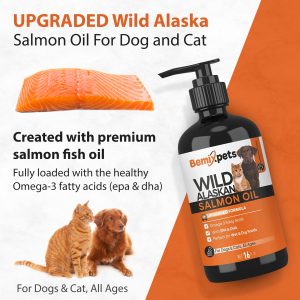Contents
What Is Raw Feeding?
A raw diet is a diet that consists of raw meats, raw bone, raw organs, and sometimes veggies or fruits. This is just one of many different varieties of diets you can feed your dog. However, a raw diet is the best diet for the majority of dogs, especially, when compared to kibble.
Let’s take a look at kibble and why it isn’t an ideal diet for dogs. Then we can dive into a raw diet, what it is, and why it is so beneficial for your dog.
The Issue With Kibble
First of all, dogs are carnivores. From Pugs to Golden Retrievers, they are all carnivores. This means that to thrive they need a diet high in protein with moderate fat and little to no carbohydrates. But what is the main nutrient in kibble? Carbohydrates, in fact, the average kibble is 60% carbohydrates!
What happens if a carnivore is fed a diet that is over half carbs, a nutrient that he doesn’t even need? Well, when a dog eats kibble, or any carb, his body sends out insulin to control the blood sugar. This is because all carbs are turned into sugar by the body, so insulin needs to do something with the excess sugar. Insulin then tells the cells to open and store the excess sugar as fat. This is why so many of the kibble fed dogs you see are overweight.
The sugar that the body makes from carbohydrates is also very bad for a dog’s teeth. Sugar sticks to the teeth and grows bacteria. The bacteria then turns into tartar and plaque, causing dental disease. Dental disease has the potential to cause or exacerbate other diseases in the body and is often linked with heart disease.
Just like the sugar form kibble encourages the growth of bacteria in the mouth it also causes bacteria, viruses, yeats, and fungi to grow in other areas of the body. This is because sugar is a favorite food source of these pathogens. Know what else loves sugar as a fuel source? Cancer. Most cancers live on sugar. If you take away that fuel source these cancers will starve and die.
To make kibble it is cooked at high heat for long periods of time. This chemically changes a lot of the ingredients in the kibble, making some of them into carcinogens. This is a pretty scary thought when you add the fact that cancer loves sugar as a fuel source. Basically, you’re feeding your dog a food with carcinogens and a ready-made fuel source for those carcinogens to grow and reproduce.
Let’s talk protein for a minute. All proteins are made up of smaller units called amino acids. There are several different kinds of amino acids and all protein sources have different kinds and different amounts of these amino acids in them. Certain amino acids are considered essential amino acids for dogs. This means that their body can’t make the amino acid, so they have to get it from the food they eat.
For kibbles, most of the protein comes from plant sources legumes, pea protein, wheat protein, soy, etc. The problem with this is that plant proteins do not have as many amino acids as meat protein does. Plant proteins are also not as good of a source of the essential amino acids that a dog needs. In addition, plant proteins often come with other nutrients that bind to them and leaves them completely useless to a dog.
Remember how we talked about kibble being cooked at high heat for a long time? Well, this cooking destroys the majority of the nutrients in the ingredients used to make the kibble. This is why manufacturers have to add synthetic vitamins and minerals. These manmade compounds are not as useful to a dog and are sometimes dangerous. Additionally, whole foods come with many nutrients in them, often the combination of the nutrients has a certain synergy that is good for overall health. Synthetic nutrients do not have this synergy.
Another thing about kibble is that the manufacturers are looking to make a profit. This is why they use so many plants as fillers. But, it also means that kibble producers try to keep up with current trends. You might have seen that some kibbles now come with added probiotics. Probiotics are great for your dog, but they are most certainly rendered useless by the cooking process of kibble making. With this, you are paying more money for essentially the same product just because it has dead probiotics in it.
A more dangerous marketing ploy is the addition of fish oils to kibble. The idea is that fish oil is high in EPA and DHA, both essential omega-3 fatty acids. However, fish oil is extremely temperamental oxygen, light, and heat can all chemically change fish oil. This means that the healthy omega-3s in the fish oil are destroyed during night kibble cooking. This creates a fat that increases inflammation, speeds the aging process, and increases your dogs chances of getting cancer. So, while it may look good on the package it is extremely dangerous and unhealthy for your beloved Golden.
Why Feed Raw?
Grey wolves are the closest wild relative to dogs, they share 99.9% of the same DNA. Wolves in general live healthy lives than our domesticated dogs. You typically do not see a wolf that is plagued by fleas, heartworms, cancer, dental disease, or other chronic diseases that often plague domestic dogs. Is it that 0.01% of their DNA, or is it what they eat?
A raw diet is basically the complete opposite of kibble. Raw is moist, while kibble is dry. Raw is raw which keeps the nutrients intact, while kibble is cooked so much that manufacturers have to add synthetic nutrients. Raw is super bioavailable and digestible to your dog, kibble is not. Raw keeps your dog’s teeth healthy, kibble does not. Raw has little to no carbohydrates, kibble averages 60% carbohydrates. Raw is interesting to eat, kibble is not. Raw is naturally delicious, kibble must be coated with chemicals to make dogs interested in eating it. Raw helps to heal your dog, keep him healthy, and help him thrive. Kibble is only made to let your dog survive, which means he will be sick, fat, and unhappy.
A raw diet is one of the best preventive medicines that you can give your dog. A raw diet can help to prevent all of those things that a kibble diet can cause. Feeding a raw, species-appropriate diet can help prevent or treat, in some cases:
- Cancers
- Liver disease
- Kidney disease
- Heart disease
- Eye problems
- Dental issues
- Allergies
- Pancreatitis
- Digestive issues
- Poor skin and coat
- Low energy
- And so much more
How To Feed Raw
In general, a dog should eat about 1-3% of his body weight in raw food a day. The amount you feed your dog will depend on his activity level, age, and overall health. The best way to know if you are feeding your dog enough or too much is to pay attention to his weight. If he is gaining weight and doesn’t need to, feed him a bit less. If he is losing weight and doesn’t need to, feed him a bit more.
The amount you feed your dog may also change over time. There may be certain times of year that your dog is more active so he may need to eat more. He may need more or less food as he ages. Just keep an eye on his weight and on his health and you will know if you should feed him more or less.
There are many different methods that you can follow to feed your dog a raw diet. In the end though they are all trying to do one thing, create a diet that is as close to that of a wolf as possible. So, what do wolves eat? They eat whole, raw animals. This means that a wolf will eat its prey’s meat, all the organs, the skin, the feathers or fur, the bone, stomach contents, glands, the works.
Now, I know that it is not feasible for most dog owners to throw a whole dead deer out in the yard for their dog to eat. Actually, a lot of dogs wouldn’t even know what to do with that. Imagine a Yorkie trying to eat a whole dead deer. Your Golden might be able to handle it if given a few days but, what would the neighbors think?
If you can feed your dog whole prey that is generally considered the best way to feed a raw diet. Sometimes you can buy whole mice, rats, guinea pigs, chickens, rabbits, quail, and other animals that you can feed whole. These are great because the food is intact with all the innards and fur or feathers. This is the best way to make sure you are giving your dog all the nutrients he needs. However, whole prey is not always easy to find.
We can “recreate” an animal for our dogs to eat. This is typically referred to as “fankenprey.” Just like Frankenstein’s monster was made out of an assortment of body parts from several different sources, a raw “frankenprey” diet lets you create a whole animal out of parts. For instance, you could make your dog’s meal with ground beef, a chicken leg, some lamb liver, beef kidney, goat spleen, pork brain, and a duck head.
The key with “frankenprey” is to use as much variety as you can find. It is good to add-in as many organs as you can get your hands on. The variety will help your dog get the most nutrients and cut down on any potential nutrient deficiencies. Plus, variety is the spice of life!
In general, it is recommended that you feed your dog 80% meat, 10% bone, 5% liver, and 5% other organs. However, you can play around with these numbers to find what works best for your dog. Because all dogs are individuals and will need slightly different nutrition to thrive and live their best lives. You may find that feeding up to 25% organ meat is even better for your dog! Or you might discover that feeding your dog 70% meat, 10% veggies, 10% bone, 5% liver, and 5% other organs is of more benefit to your dog.
It all comes down to observation. If you add a bit more of this, does your dog seem happier and healthier? If you don’t feed your dog that, does that make a positive difference? It is helpful to keep a notebook with what you feed your dog every day and any odd behavioral or other issues you notice. This will help you pinpoint any foods that may be causing issues for your dog.
A wolf’s diet also varies quite a lot. They may eat a squirrel one day, feast on some venison the next, and have a rabbit the next. This is important for us to remember. With a raw diet, we are striving to create a diet similar to that of a wolf. So, if a wolf eats variety, you should strive to feed your dog a diet that is rich in variety too.
But know that variety can happen over time, it doesn’t have to happen all at once. Perhaps you can find lung this time, but next time you can’t. That’s okay. Wolves don’t have access to constant variety either. In fact, they usually eat seasonally. Salmon when they are jumping, blueberries when in season, venison when the pack can catch one, baby animals in the spring, etc. It is important to offer your dog variety but that variety can happen over time.
Summary
A raw, species-appropriate diet that is as close to the diet of a wolf as possible is best for the majority of dogs. It helps to prevent disease and, in many cases, bring healing. Food is either medicine or poison that you are feeding your dog every day. Kibble is poison. A raw, species-appropriate diet acts as medicine. You choose what to feed your precious Golden every day. Please, choose medicine and not poison. You are smart enough to know what is best for your dog.






Leave a Reply
You must be logged in to post a comment.